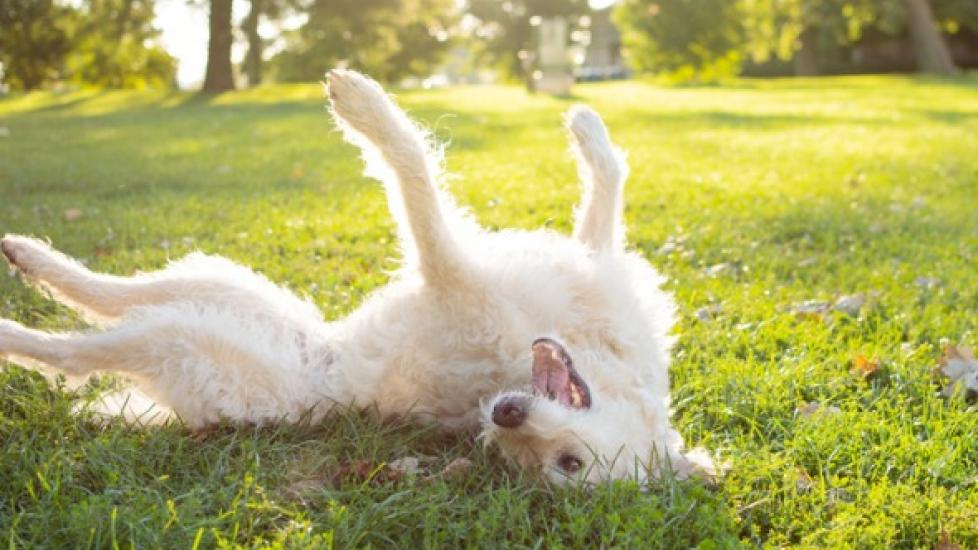Ah, the curious canine conundrum of why dogs roll in grass (or other smelly substances) has long puzzled pet owners and scientists alike. It’s a behavior that often leaves us scratching our heads or laughing at their antics. But what drives this seemingly strange act? Let’s delve into the world of doggy doings to uncover some possible explanations for this fascinating feline-free phenomenon!
Firstly, let’s address the obvious: it’s just plain fun! Rolling is one way that dogs express joy and excitement about being outside, particularly in an environment rich with new smells and textures. The act itself provides a sensory overload that many pups find irresistible. Additionally, rolling may help them mark their territory by transferring scents from the ground onto their fur, which they then spread around as they move through different areas. This olfactory calling card tells other animals “I was here!” – an important message in the complex social hierarchy of the animal kingdom.
Another theory suggests that rolling could be related to grooming instincts. By rubbing against the earth, dirt, or plants, dogs are essentially giving themselves a natural bath. While we humans might cringe at the thought of getting dirty on purpose, remember that your pup doesn’t have access to soap and water every time he needs a quick cleanse! A good back scratch followed by a roll can effectively remove loose hair and any pesky parasites looking for a ride home with Fido.
Furthermore, there seems to be something primal within all mammals that makes them want to flatten their fur. Think about how you sometimes run your hands over your own head after waking up; it helps smooth out those morning bedhead tangles. Similarly, when your dog rolls vigorously across various surfaces, he’s likely trying to achieve a sleeker coat appearance without having to rely on human assistance (though we still recommend regular brushing sessions too!).
Last but not least among these hypotheses is the possibility that rolling serves as camouflage. In the wild, blending into surroundings can mean life or death for both predator and prey species alike. Although domesticated pets don’t typically face such dire consequences nowadays, instinctual behaviors like this may persist because they once had survival value. Perhaps Rover unconsciously wants his stripes so he can sneak up on squirrels more easily – even if only in playtime fantasies!
In conclusion, while no single explanation fully captures why dogs engage in this amusing activity known as ‘the great green tumbleweed impression’, it appears clear that multiple factors contribute to this common yet quirky habit. Whether motivated by enjoyment, self-grooming efforts, territorial marking tendencies, or even vestigial camouflage strategies – each reason adds another layer of complexity and fascination to our understanding of our beloved four-legged companions’ actions. So next time you see Spot writhing blissfully amongst blades of grass like some sort of lawn-based contortionist champion – sit back with a smile knowing there’s science behind silliness after all!
